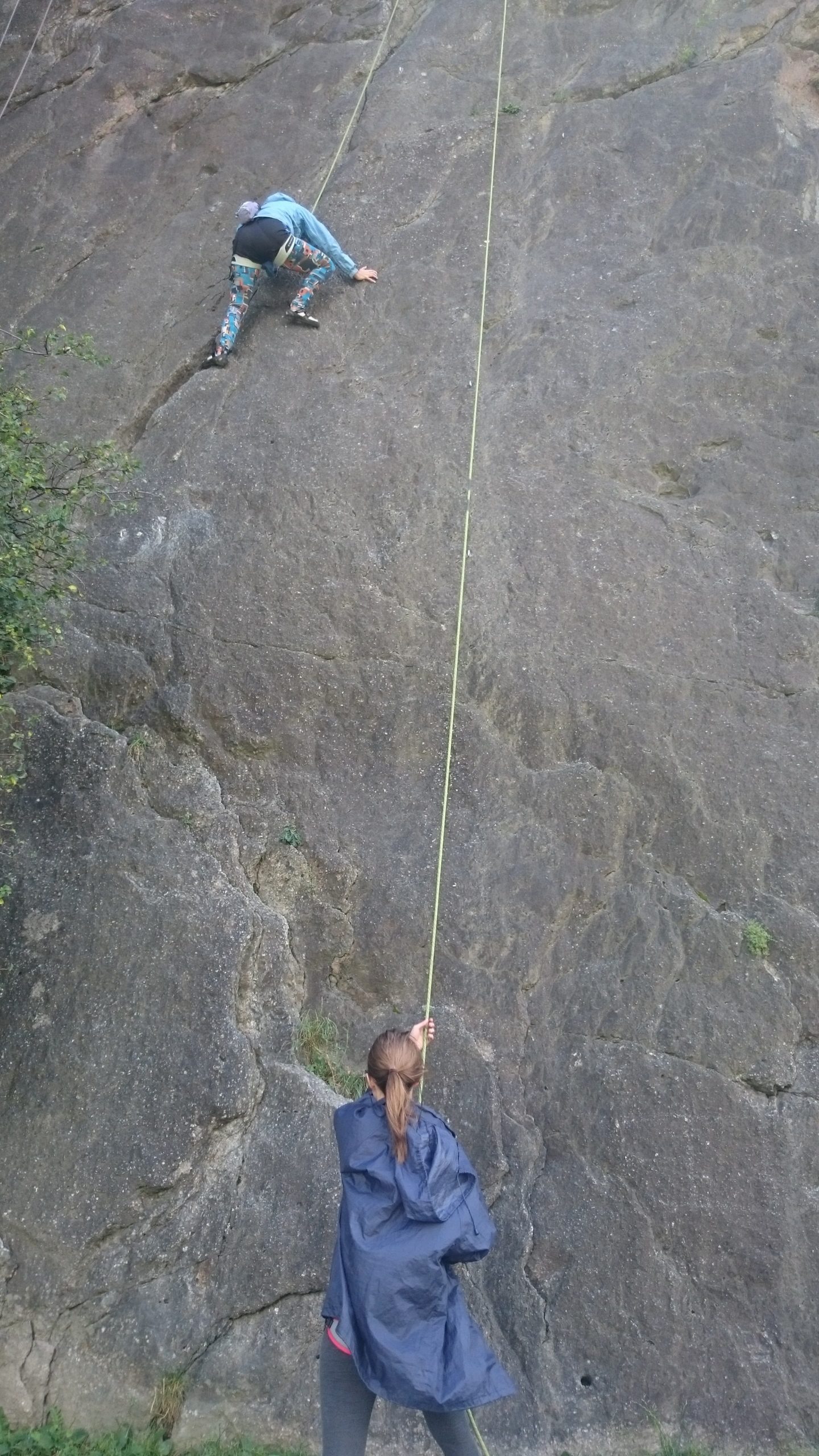Table of Contents
Belaying is a core climbing skill. With good belaying a climber can climb as fast as he is comfortable to climb, as if without a rope and yet have his fall cushioned at be safe at all times. The belayer needs to be active. He needs to observe and be attentive. I first learned to rock climb with a rope about ten years ago on the Italian side of the Alps and at the time I enjoyed climbing more than I enjoyed belaying. I then spent several years climbing via ferrata instead. The advantage with via ferrata is that it’s a simplified form of climbing.
Over a year ago I started climbing indoors daily as I finally found a group with which to climb. My interests and skill in belaying improved. Yesterday I assisted a short belaying perfection course in anticipation of the Villars IFSC climbing event. During this session we were reminded of a few key points.
Pre-climb check
As part of the pre-climb check we check that the rope is threaded through both loops on the climbing harness. We then check that every knot on the figure of eight knot is double. Once this is done we run through the rope and put it in a theoretical basket to check that there are no knots.
Initial part of the climb
Before the first clip as a belayer we are there to assist and direct the climber should they fall. We guide them towards a good landing until they get to the first clip. Once they are clipped in we make sure that they have enough rope to progress without feeling a pull downwards. We keep one hand to feed the rope and the second is always below holding the brake end of the rope. If they fall we are ready to stop and block the fall for the first four clips. From the fourth to the sixth clip we have a choice of either absorbing the fall or absorbing the fall and letting them descend to the ground. Once above the sixth clip we are feeding rope and ready to slow the fall and then lower the climber to the ground.
A dynamic movement
When you’re belaying you keep your legs so that one is forward and the other is behind. You’re ready to step forward to quickly provide more rope and ready to step back to tension it. If they fall we are in a good position to react to slow down the fall and lower the person back to the ground.
Lowering
When lowering the climber both hands are on the brake side of the rope. One can feed the rope a little faster and the second one is providing resistance as the rope slides through the system. Gloves that protect palms are recommended that are cut off so that fingers still have a tactile feel for the rope.
Learning to fall
During the training we took it in turns to belay and then to climb. When we were climbing we learned to be confident enough to fall and trust the belayer to slow down and then lower us. As a result of this part of the climbing training I was able to push my climbing to a higher grade and be confident enough to fall a number of times. This was a pleasant part of the climbing training because it allowed me to open up more challenging climbs.


Leave a Reply